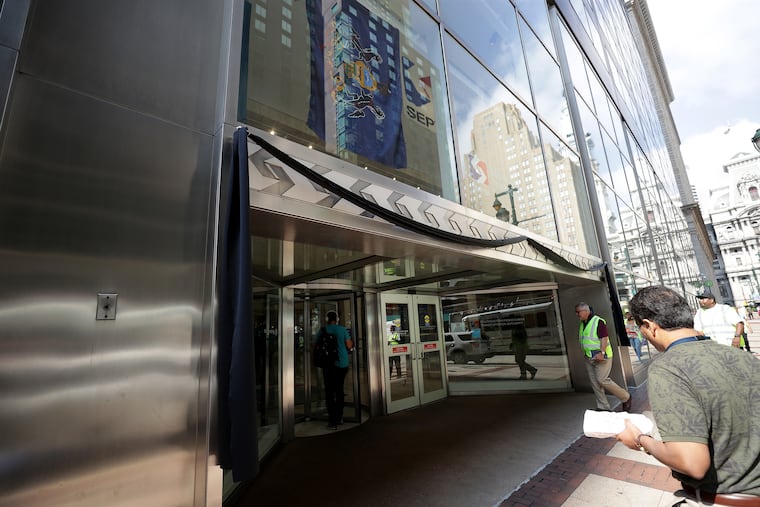SEPTA’s safety rules should prevent subway deaths, but on Monday, something went awry
The longtime SEPTA worker died during a routine track inspection.

For SEPTA’s track workers, sharing the rails with subway trains is a routine part of the job and subject to a web of safety precautions.
On Monday, though, something went wrong, and employee Darren Monroe, 54, a father of four, was killed. He was inspecting track on the Broad Street Line near Erie Station when he was struck by a northbound train about 5:44 p.m. Another SEPTA worker is recovering from injuries, officials said.
The Northeast Philadelphia man’s death was a tragic rarity for SEPTA, which has not lost a worker in an on-the-job death since 2009, when a Regional Rail track inspector was killed. Monroe, a 17-year SEPTA veteran, is the first worker to die on SEPTA subway tracks in at least 10 years, the transit agency said.
Agents from the National Transportation Safety Board were still in Philadelphia on Friday investigating Monroe’s death. During an NTSB investigation, both the transit agency and labor unions connected to the death must remain mum.
For now, it is unclear which of the Broad Street Line’s four tracks Monroe was inspecting, and on which track the train that hit him was traveling. It is also unclear what precautions were being taken to protect the workers. Those questions are all part of the NTSB’s ongoing investigation, the lead investigator has said.
>>READ MORE: SEPTA worker killed while doing track inspection, feds say. Safety procedures under investigation.
Unlike commuter rails, which operate with safety protocols established by the Federal Railroad Administration (FRA), America’s subways have no uniform safety code. Each transit agency adopts its own procedures. SEPTA’s safety regulations for workers on the Broad Street and Market-Frankford Lines, though, are the same as the FRA standards used for Regional Rail. Having one safety code across all rail service avoids confusion, SEPTA officials said. SEPTA coordinates with PennDot’s Rail Transit Safety Review Program to develop safety procedures and standards, the state agency reported.
The lack of a federal safety standard is likely a result of the rarity of worker deaths on the track.
“It’s never been enough to generate another layer of bureaucracy,” said Ken Briers, a retired railroad conductor and inspector, and a board member on the Rail Passengers Association, a national advocacy group for rail safety. “If you had a spate of these instances, there would be a hue and cry and congressional hearings.”
From 2002 to 2019, the Federal Transit Administration reported 37 employee deaths on America’s subways.
Monroe and the other man injured were conducting inspections and simple maintenance, officials have said, something Briers said can occur daily on a subway line. Inspectors must be vigilant about spotting debris, ensuring joints in the tracks are secure, that power wires for the signaling system are live, and bolts or spikes are properly holding tracks in place. The work doesn’t require train traffic to be put on hold, and there are a number of ways workers can stay alert to coming trains.
A safety briefing should precede anyone going onto, or “fouling,” a track, according to regulations, but it is not required that all train traffic cease because people are on the tracks. When a group is on the tracks, one person is assigned to ensure the safety of other workers. who should be able to receive at least 15 seconds of warning about an approaching train, according to SEPTA’s safety regulations.
“If you know what you’re doing, if you’re a qualified employee, and you’ve got communication, you can hear what other trains are doing, you’ve got signals you can watch,” Briers said.
SEPTA’s subway routes include regularly spaced alcoves along tracks that workers can step into to get out of the path of trains. The men involved in Monday’s incident were wearing reflective vests and helmets, the NTSB chief investigator said, and Briers said they also likely had radios.
The transit agency’s system has several options for protecting inspectors, according to the agency’s guidelines. Workers may be aware of coming trains by relying on their own senses and information provided by a train dispatcher or controller, who should be alerted to the presence of people on the track. SEPTA also can send spotters to the tracks along with inspectors — people who can carry a horn or whistle and alert inspectors to an approaching train.
SEPTA has not said whether anyone other than the two men involved in this week’s incident were nearby, and the NTSB has said that determination would be part of its investigation.
The federal investigators will likely release a report with preliminary fact findings within a few weeks of the death, but it typically takes at least a year for the NTSB to release conclusions on what caused the death, and whether SEPTA should make any changes to its safety procedures to prevent such deaths in the future.
As of Friday, SEPTA said the incident had not prompted any adjustments of its safety policies.